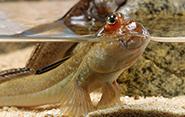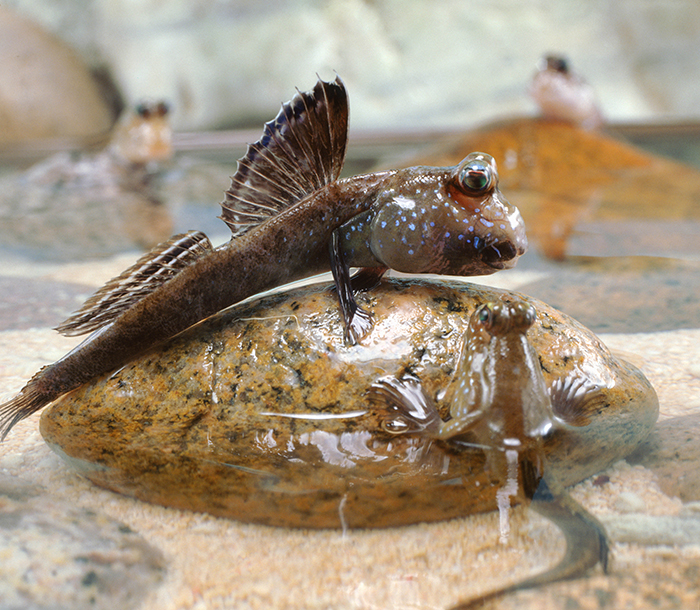Madhusudhan Venkadesan Wins NSF CAREER Award

For a study on the fins of amphibious fish that aims to gain answers about the origins of land-dwelling animals, Madhusudhan Venkadesan has won a 2021 Faculty Early Career Development (CAREER) Award from the National Science Foundation (NSF).
Venkadesan, associate professor of mechanical engineering & materials science, will use the $685,000, 5-year grant to closely study the biomechanics of the amphibious mudskipper and other fish. The NSF CAREER award is a prestigious honor for young faculty members and supports the early career activities of teachers and scholars who are most likely to become the academic leaders of the future.
 The long-term goal of the ambitious project is to discover the biomechanical principles that enabled fins to function on land and then give rise to all terrestrial vertebrates in the water-to-land evolutionary transition about 400 million years ago. One aim is to learn how these lightweight fins can withstand the forces encountered on land, and what that can tell us about the common ancestor of all land vertebrates. Besides answering these long-standing questions, the research could help advance work on developing feet or fins for agile robots and vehicles capable of traversing diverse environments. Such devices would be critical for search-and-rescue operations and remote ecological studies in places too dangerous for humans.
The long-term goal of the ambitious project is to discover the biomechanical principles that enabled fins to function on land and then give rise to all terrestrial vertebrates in the water-to-land evolutionary transition about 400 million years ago. One aim is to learn how these lightweight fins can withstand the forces encountered on land, and what that can tell us about the common ancestor of all land vertebrates. Besides answering these long-standing questions, the research could help advance work on developing feet or fins for agile robots and vehicles capable of traversing diverse environments. Such devices would be critical for search-and-rescue operations and remote ecological studies in places too dangerous for humans.
The study’s focus, the mudskipper, breathes through gills instead of lungs and moves with fins instead of limbs, but still spends most of its adult life on land. Venkadesan and his team of researchers will compare the mudskipper to a few other related species, including a distantly related amphibious fish, the bichir, and with such aquatic fish as gobies and mackerels.
“We want to identify the specializations of the mudskipper, which we hope will give us insight into how the first land animal came out of water,” he said. “The earliest ancestors to all land animals were quite different from the mudskipper in many ways, but one thing that's common is that it used a fin-like appendage to move on land. We want to understand what specializations allowed an animal to do that when it’s otherwise aquatic. Can all fish fins support ground forces or is there something special about amphibious fins?”
Curvature-induced stiffness (think of how a floppy dollar bill straightens when it’s curved lengthwise) may have something to do with it. Venkadesan has studied this effect in human feet and in aquatic fish fins. Anatomically, fins are very different, but the underlying physics principles seem to be related. That raises the question about why some fish can use their fins to move on land, but others can’t.
Mudskippers are a tricky animal to study. “These fish are at most 10 centimeters long and weigh 10 grams or less, and they move pretty fast,” he said. “And they’re not like legged animals who just use their feet or paws to push on the ground - every part of their body could push on the ground to help them move.”
It’s a complexity that requires new technology, and a key part of the project is developing a new optical force sensor that can get the full picture of a mudskipper’s motions and ground forces.
“We want to make a sensor that tells me what the force is everywhere - not just one aggregate measure like a weighing scale, but one that tells me the distribution of the force.”
The project also entails education and outreach. For that, Venkadesan is working with Yale’s Peabody Museum of Natural History and Yale Pathways to Science, a program designed to foster interest in STEM among students in grades 6-12. Activities include curriculum development, a mentorship plan for high school students, and student-developed hands-on museum exhibits on amphibious fish that will also serve as novel teaching aids for school teachers.
(Video by Michael Kuba)
(Mudskipper photo credit: Warren Photographic)

